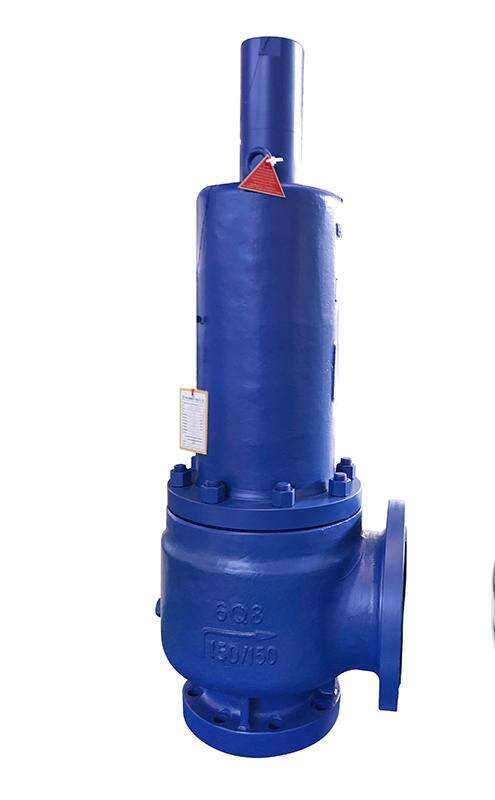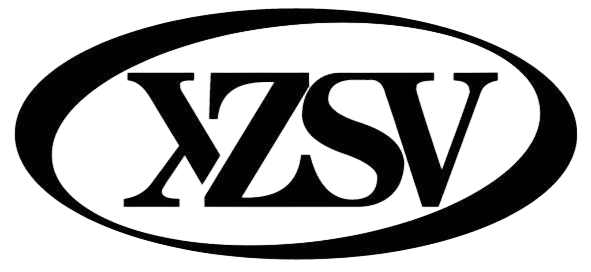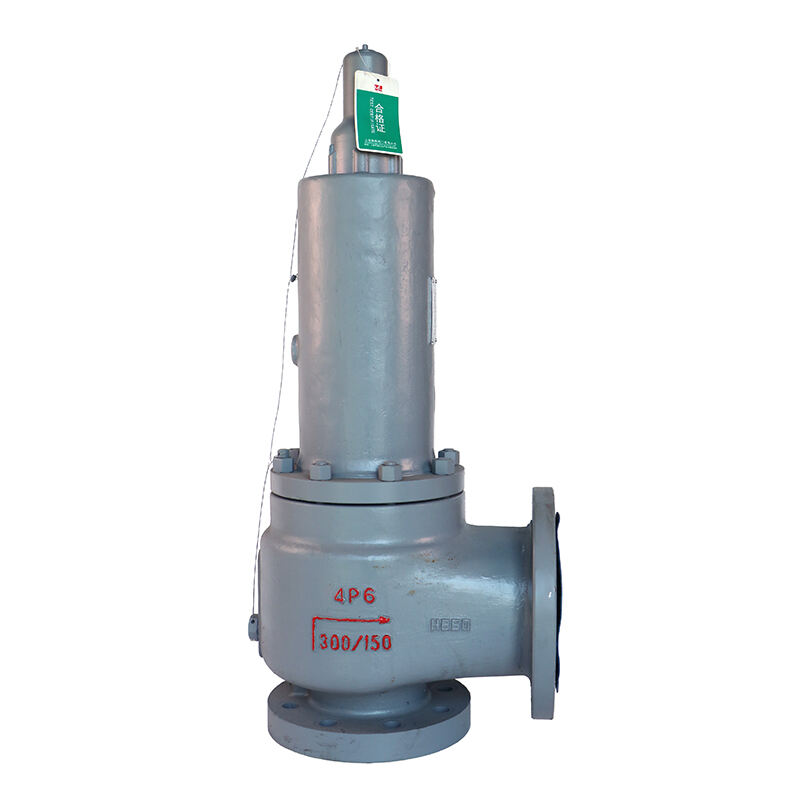Pressure Relief Valve Maintenance Checklist: Extend Service Life and Ensure Compliance
Pressure relief valve maintenance is an essential aspect of industrial safety and efficiency. The role of a pressure relief valve is to protect pressurized systems by opening automatically when pressure exceeds a safe limit, preventing catastrophic failures. Without a structured maintenance approach, these critical devices may fail at the moment they are needed most. A maintenance checklist ensures service life is extended, operating costs are reduced, and compliance with industry regulations is achieved.
The Function and Significance of a Pressure Relief Valve
A pressure relief valve is designed to release excess pressure from boilers, pipelines, storage tanks, and other pressurized equipment. By discharging fluids or gases, it prevents over-pressurization that could otherwise result in equipment rupture or explosions. Once pressure normalizes, the valve reseats to restore the system to normal operation. The significance of this function cannot be overstated. In industries such as oil and gas, chemical processing, and power generation, failure of a single valve can trigger widespread hazards, environmental damage, or loss of life.
Maintenance is therefore both a compliance issue and an operational necessity. Regular inspection ensures the valve remains calibrated and free of corrosion or deposits. Proper servicing extends the operational life of the valve, reduces downtime, and assures regulatory bodies that safety standards are being met.
Why Maintenance Cannot Be Ignored
Ignoring pressure relief valve maintenance invites serious risks. Valves exposed to corrosive gases or liquids may suffer from pitting, scaling, or leaks. Infrequently tested valves may stick or seize due to lack of lubrication. Springs and seals may fatigue over time, altering the set pressure at which the valve activates. In such cases, the valve might either fail to open during overpressure events or open prematurely, both scenarios leading to system inefficiency and hazards.
Beyond operational risks, regulatory agencies such as OSHA and ASME demand documented maintenance records. Failure to provide evidence of compliance can result in penalties, shutdown orders, or loss of certification. Insurance providers also require regular valve maintenance to reduce liability exposure.
Recommended Maintenance Schedule
The frequency of maintenance depends on several variables: the type of industry, the operating environment, the pressure range, and the fluid characteristics. As a general guideline, visual inspections should be carried out monthly, functional testing annually, and comprehensive overhauls every three to five years. However, in high-risk industries such as chemical production or nuclear power, more frequent checks may be necessary.
Environmental conditions also dictate maintenance intervals. Valves in environments with high humidity, corrosive gases, or abrasive particles must be inspected more often than those operating in clean, dry conditions. Manufacturers typically provide recommendations that should be integrated into the facility’s preventive maintenance program.
Detailed Pressure Relief Valve Maintenance Checklist
The following stages form a comprehensive checklist to ensure the integrity and reliability of pressure relief valves.
Preparation involves isolating the valve from the system and ensuring safe depressurization. Safety protocols require proper lockout-tagout procedures before any disassembly occurs. Technicians must wear personal protective equipment suitable for the process fluids contained in the system.
Visual inspection is the next stage. Technicians should examine the valve body for cracks, corrosion, or external leaks. The spring housing, inlet, and outlet should be checked for debris or signs of erosion. Any unusual discoloration or deformation is a signal that the valve may not function properly.
Operational testing is performed to confirm that the valve opens at the designated set pressure. Bench testing can be conducted using calibrated testing equipment. This step ensures the valve reacts within the allowable tolerance limits prescribed by standards.
Cleaning is crucial, especially if the valve has been exposed to steam, scale, or chemical deposits. Internal surfaces must be cleaned using suitable solvents or mechanical methods that do not damage seating areas. Care must be taken not to alter surface finishes that affect sealing.
Component checks include detailed inspection of the spring, seals, and seat. Springs should be measured for tension and elasticity, as fatigue over time may cause deviations in opening pressure. Seals must be free of cracks or hardening, and the seat should show no signs of pitting or scoring. If components fail inspection, they must be replaced with manufacturer-approved parts.
Reassembly and recalibration follow cleaning and inspection. Once reassembled, the valve must be recalibrated to ensure it opens at the precise pressure required by the system design. Calibration must be verified with certified test equipment, and results documented.
Documentation forms a vital part of maintenance. Every inspection, test, or replacement must be logged, noting the valve identification number, date, procedures performed, and test results. Documentation satisfies compliance audits and provides historical data that help predict future maintenance needs.

Storage of spare or standby valves should also follow best practices. Valves kept in storage must be protected from moisture, dust, and mechanical damage. Desiccant packs, sealed coverings, and controlled environments help preserve valve integrity until installation.
Common Problems Identified During Maintenance
Several recurring issues often arise during valve maintenance. Seat leakage is a common problem caused by debris, scale, or pitting on sealing surfaces. Spring fatigue is another frequent issue, leading to inaccurate opening pressures. Corrosion, particularly in valves exposed to aggressive chemicals, can damage internal surfaces and shorten valve life. Sticking mechanisms, often the result of dried lubricants or dirt, prevent the valve from opening smoothly. Each of these problems reinforces the importance of preventive maintenance and timely replacement of worn parts.
Compliance and Industry Standards
Compliance with industry codes is an integral part of valve maintenance. ASME Boiler and Pressure Vessel Code outlines requirements for pressure relief devices in boilers and pressure vessels. API standards provide guidance for valves used in petroleum and natural gas industries. OSHA regulations mandate workplace safety, which includes maintaining protective devices such as relief valves.
Facilities must also comply with local regulations, which may impose stricter requirements based on regional safety concerns. Documented proof of maintenance is often mandatory for insurance and inspection purposes. Therefore, maintaining a robust checklist not only ensures operational reliability but also demonstrates compliance with governing standards.
Best Practices for Extending Valve Service Life
To maximize service life, several best practices should be followed consistently. Proper installation at the outset is critical, ensuring valves are positioned correctly with adequate drainage and free of piping stress. Selecting the right valve materials for the process fluid prevents premature corrosion or wear. Lubrication of moving parts should be performed as specified by manufacturers, avoiding over-lubrication that may attract contaminants.
Training personnel in correct maintenance procedures is equally important. Skilled technicians who understand the mechanics of pressure relief valves are more likely to detect early warning signs of failure. Adopting digital monitoring technologies can also help by providing real-time data on valve performance, identifying anomalies before they escalate.
Conclusion
A pressure relief valve is more than a mechanical device; it is the final safeguard against overpressure hazards. A comprehensive maintenance checklist ensures that these valves perform as designed, extending service life and ensuring compliance with safety regulations. Through consistent inspections, cleaning, testing, and documentation, facilities can prevent failures, avoid costly downtime, and maintain safe operations. The long-term benefits of structured maintenance far outweigh the risks of neglect.
FAQ
What is the primary purpose of a pressure relief valve?
The primary purpose is to protect pressurized systems from exceeding safe pressure limits by automatically releasing excess fluid or gas.
How often should a pressure relief valve be tested?
Most valves require annual functional testing, though high-risk environments may demand more frequent checks.
What are common signs that a valve needs maintenance?
Leaks, corrosion, unusual noises, premature opening, or failure to reseat properly are common signs of wear or malfunction.
Can pressure relief valves be repaired, or must they always be replaced?
Many valves can be repaired by replacing springs, seals, or seats, provided the body remains intact. However, severely damaged or corroded valves should be replaced.
Why is documentation so important in valve maintenance?
Documentation provides proof of compliance with regulations, assists in audits, and offers valuable history for predicting future maintenance needs.
What standards govern pressure relief valve maintenance?
Key standards include ASME Boiler and Pressure Vessel Code, API standards for petroleum industries, and OSHA workplace safety requirements.
Table of Contents
- Pressure Relief Valve Maintenance Checklist: Extend Service Life and Ensure Compliance
- The Function and Significance of a Pressure Relief Valve
- Why Maintenance Cannot Be Ignored
- Recommended Maintenance Schedule
- Detailed Pressure Relief Valve Maintenance Checklist
- Common Problems Identified During Maintenance
- Compliance and Industry Standards
- Best Practices for Extending Valve Service Life
- Conclusion
-
FAQ
- What is the primary purpose of a pressure relief valve?
- How often should a pressure relief valve be tested?
- What are common signs that a valve needs maintenance?
- Can pressure relief valves be repaired, or must they always be replaced?
- Why is documentation so important in valve maintenance?
- What standards govern pressure relief valve maintenance?


